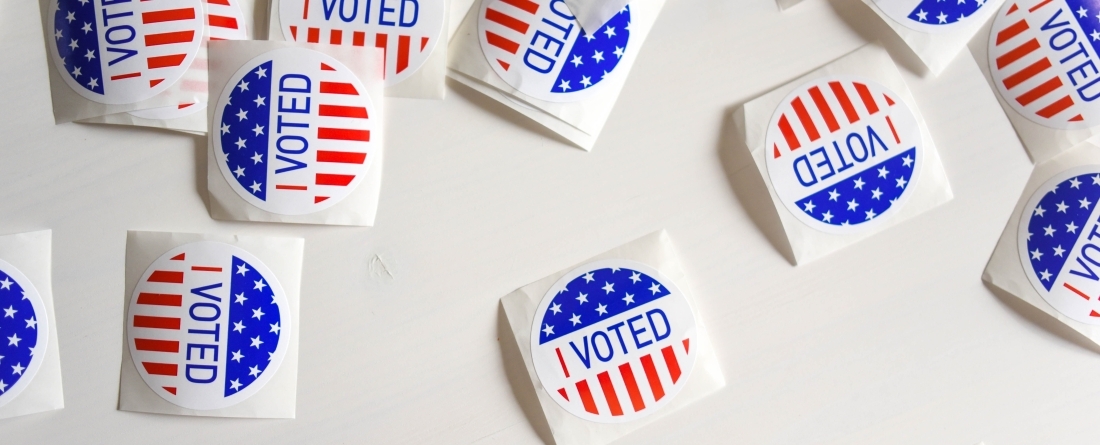
Proponents of lowering the voting age to 16 received two pieces of good news recently. Young people have embraced their voting power in the first city to adopt this reform, and Americans are open to the idea that young people can be meaningful participants in our democracy.
There is a body of research on the merits of lowering the voting age. This is not a new idea: Numerous other countries allow 16- and 17-year-olds to vote. In 2019, 126 members of Congress (125 Democrats and one Republican) voted in favor of a measure to lower the voting age in federal elections. The issue need not be partisan. Although Democrats have promoted the idea in greater measure, about 20 percent of Republicans support it. Both parties should encourage the newest voters to join their ranks.
Currently, five cities in Maryland (Takoma Park, Greenbelt, Hyattsville, Riverdale Park, and Mount Rainier) and two in California (Berkeley and Oakland) allow 16- and 17-year-olds to vote in local elections or school board contests. In November, voters in Culver City, California, will decide whether to lower the voting age. San Francisco voters have come close to adopting this reform: In 2020, the measure garnered 49.2 percent of the vote, slightly more than it received in 2016.
Voting is habit forming, so beginning voting when individuals are cognitively capable of doing so—which studies of brain development show occurs by age 16— can improve these individuals’ turnout later in life.
The first bit of new positive data on this issue comes from Takoma Park, which lowered the voting age in city elections in 2013, becoming the first American jurisdiction to let 16- and 17-year-olds vote. New data released by the Takoma Park city clerk shows that turnout among this age group has soared.
In the first election after the reform, a low-key city affair in 2013, 44 percent of young voters participated, compared to 10 percent of all voters. Perhaps that’s not surprising given the novelty of the idea and the media coverage surrounding it. What would happen when people weren’t paying as much attention?
Young Takoma Park residents continued to vote. In November 2015, almost 45 percent of 16- and 17-year-olds voted, compared to just 21 percent of all voters. November 2017 told the same story: almost 48 percent turnout among 16- and 17-year-olds and only 22 percent of all voters.
That’s impressive, for sure, but it pales in comparison to the 2020 numbers: 69 percent turnout of this youngest age group versus 54 percent of all voters. One explanation for the increase might be that the city moved its local elections to even-numbered years to coincide with federal elections, which tends to improve turnout. And young people were likely energized by the Trump-Biden presidential election even if they could not vote in it. To be sure, the total raw number of voters is small—132 of the 191 registered 16- and 17-year-olds voted in 2020—but that does not diminish the fact that the youngest voters turned out at a high rate.
What’s most intriguing is that the benefits of this reform have been stable for almost a decade. Year after year, these young voters are embracing their new voting power, which is especially impressive given that new 16- and 17-year-olds become eligible to vote in each election cycle. Turnout tends to increase as people age: Nationwide, 18- to 24-year-olds have the lowest turnout. But in Takoma Park, those under 18 vote at higher rates than the rest of the population.
These numbers support the growing trend of American jurisdictions that have debated whether to lower the voting age for their elections.
Not every jurisdiction can legally adopt this reform, and some states do not grant “home rule,” or the authority to make local-specific election rules, to their municipalities. But for those places that have adopted a lower voting age, these numbers show that young people are engaged in their local democracy.
The second bit of good news came from the Vote16 Research Network, a new initiative of scholars (including myself) and policy makers housed at the University of Maryland. Two researchers, Michael Hanmer and Sam Novey, led a project that surveyed Americans about their views on lowering the voting age to 16. They found that about one-third of Americans support the idea. Most intriguingly, they also learned that those who oppose it are open to changing their views.
The researchers presented respondents with various messages about lowering the voting age. They found that approval of the reform jumped significantly after hearing certain messages, such as about the competence of young people to participate in democracy. The survey presented a hypothetical public meeting about the idea, where 16- and 17-year-olds spoke out for lowering the voting age. Here is the message that resonated the most with survey respondents:
Mary Clark, who is 16 years old, spoke about her experience with politics. “It is important to be involved so I regularly attend public meetings and have served as a volunteer poll worker during elections,” Clark said. Across the board, the 16 and 17-year-olds explained that they use multiple sources to learn about the candidates and issues and are ready to cast an informed vote.
The researchers found that when prompted to consider the political competency of young people, support for lowering the voting age jumped from about one-third to nearly half of respondents. These results, the researchers said, were “extraordinary”: “The opposition to lowering the voting age is much softer than we and other scholars had predicted.”
As we look to sustain our democracy, lowering the voting age should be on the agenda. Of course, we must also improve civics education so these newest voters have a strong baseline with which to exercise their new rights.
The turnout data from Takoma Park and the new survey research from the Vote16 Research Network demonstrate an important principle: Young people are our future. We should embrace their entry into our democracy.
